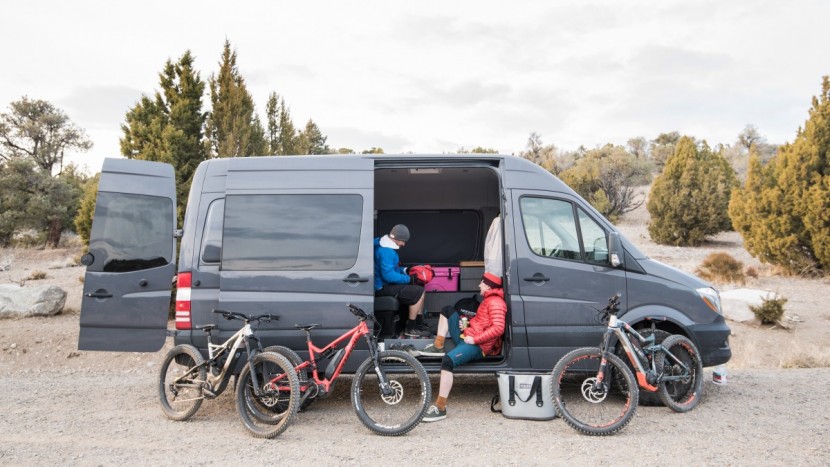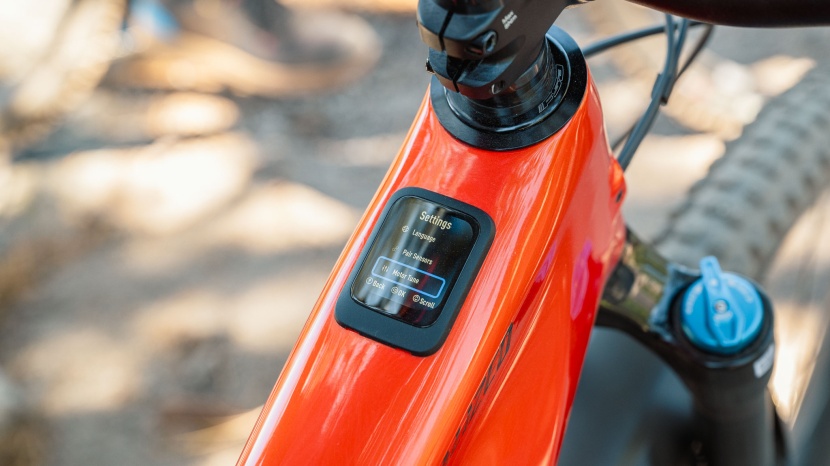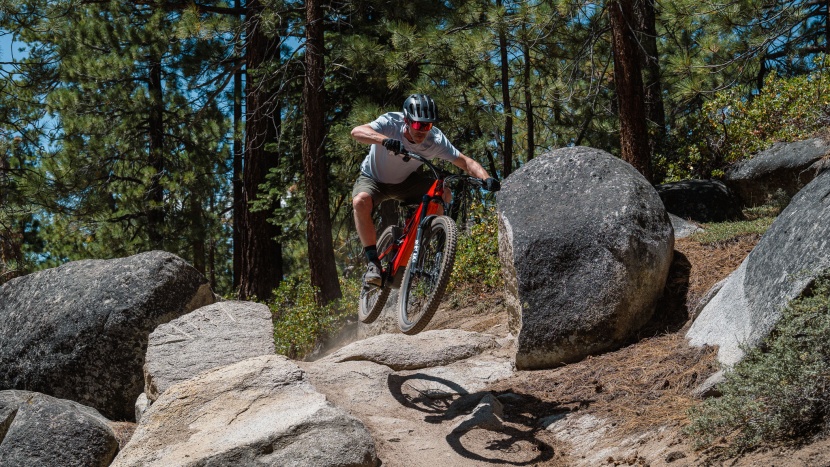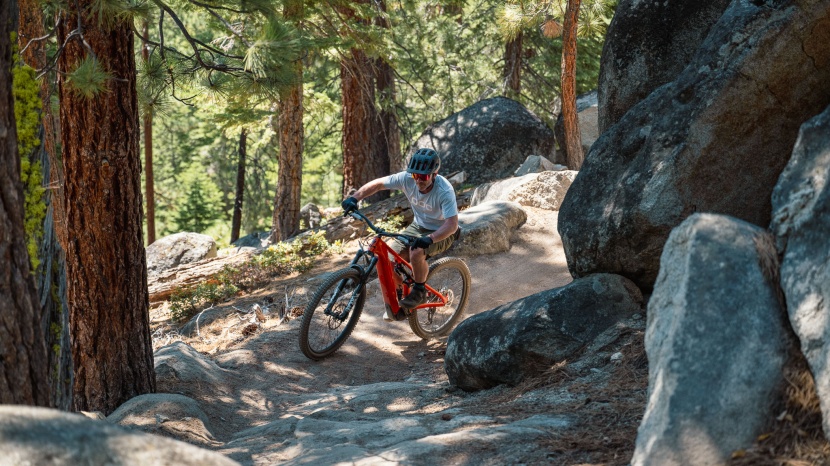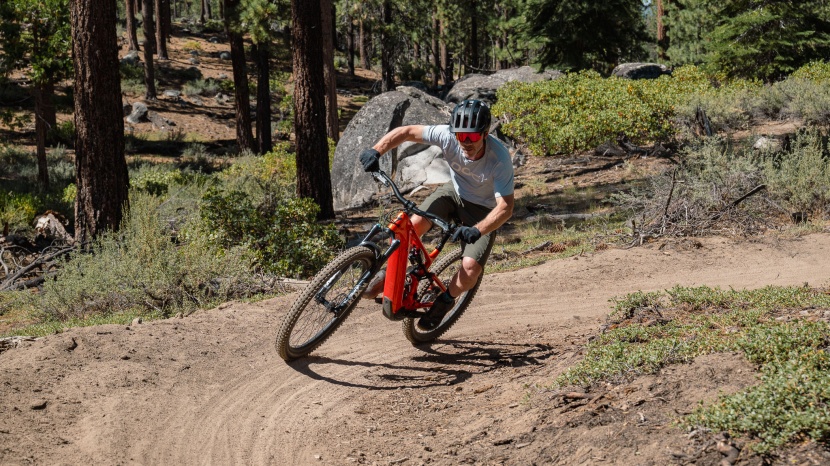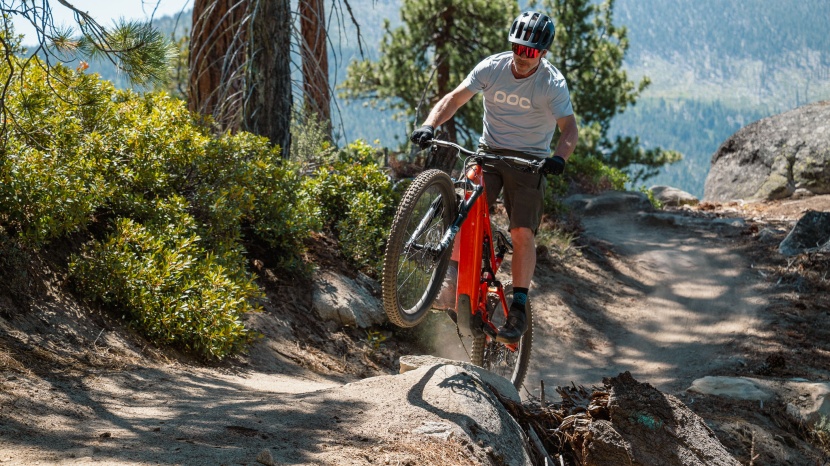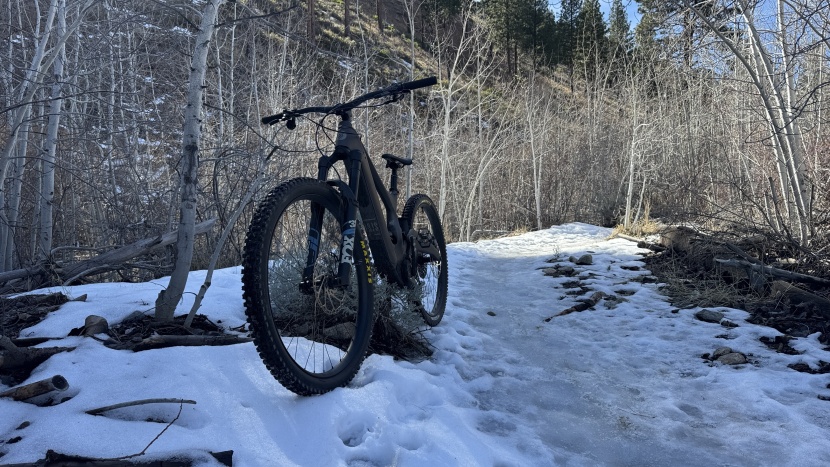E-Bike Controls
The E-bike controls are your interface with the electronics that control the pedal-assist drive unit. Each system is slightly different in feel, interface, and adjustability. E-bike controls include a top-tube display of some kind and a handlebar-mounted controller (or controllers) that allow you to adjust the motor support settings. The types of digital displays vary drastically between models. Some use a few simple LEDs, while others have OLED touchscreens. Most of these systems are Bluetooth-compatible and can connect to an app that gives you greater control over performance parameters via your phone's screen. We also include the bike's battery, charge port, and charger in this metric and evaluate their placement, ease of use, and charging speed.
To evaluate the e-bike controls, we assess their ergonomics, intuitiveness, visibility, and overall user-friendliness. We rate the digital displays based on their size, orientation, and the amount of data they give us access to. We discuss the way the information is presented and how easy it is to adjust. We analyze the remotes, note whether they are wired or wireless, how they can be positioned, and how their ergonomics interface with the rest of the bike's controls. To evaluate the apps for each model, we download and thoroughly examine the settings and note which adjustments can be made to the motor's behavior. You can often control how rapidly the assist reacts, how much motor overrun is given, and independently adjust power and torque for each ride setting. Throughout testing, we charge the bikes dozens of times, measure the charge voltage, and calculate exactly how long each battery takes to charge completely.
Downhill Performance
XXXXXX
The only way to test an e-bike's downhill performance is by riding it downhill, so we did, a lot. The beauty of an e-bike is how quickly you can get back to the top for another lap; this facilitates riding them downhill repeatedly to get a feel for the handling, suspension, traction, geometry, cockpit, components, and everything that goes into the way a bike performs while descending. We rode numerous trails with a variety of trail types, terrain features, and conditions to test their performance across a range of environments, from fast and flowy to low-speed and technical. We traded off bikes and had a chance to compare them in back-to-back laps on the same trails for reference.
The way a bike performs while descending is somewhat subjective in nature and depends on the rider's preferences, skill level, weight, etc. That being said, each bike we tested had a unique character and performance out on the trail, and testers' notes on downhill performance were all very similar. Bike designs, geometry, center of mass, kinematics, and suspension components are less subjective, and these aspects of the bikes were analyzed and judged in relation to how the bikes performed while riding downhill.
Climbing Performance
Since the majority of time spent on a bike is while climbing, we had plenty of time to consider the climbing performance of each e-MTB in our test. The presence of a pedal assist drive unit makes these bikes climb quite a bit differently than bikes without, as you have varying levels of pedal assist support helping you along the way. The motors and batteries of e-bikes also make them heavier than traditional mountain bikes, and that weight, combined with modern knobby tires, tends to provide excellent traction. The power output and delivery of each model also contributed to each bike's climbing performance, as well as its handling, geometry, and rider position.
Between downhill laps, we rode the bikes back uphill on a variety of trails and terrain, testing each model's abilities in fast and open sections as well as tighter and more technically challenging stretches. By feel, testers evaluated the way each bike handled in these situations and compared the different models to each other on the same sections of trail. Testers also considered the power of the drive unit and what role it played in each bike's performance.
Power Output
Based on the numbers, the e-bikes in our test selection all offer similar levels of power output. Those numbers don't exactly translate to the same thing out on the trail, and each drive unit provided subtle differences in power output during real-world testing in the field. Levels of torque, maximum speed, power band initiation, and cutoff all varied between the different models, and although these differences weren't huge, they were very apparent.
To test the power output, we didn't use the same lab-based dyno that we use for evaluating electric bikes with hub motors. Instead, we rode the bikes and felt these differences while out on the trail. How power transfers from the drive unit feels different when riding, and was readily apparent to our hypersensitive test crew. Torque is a measurement of the force applied to cause rotation, and a motor with more torque feels more powerful. Power band initiation and cutoff are also based on feel and can be determined by how far into a pedal stroke you go before feeling the support from the motor. The cutoff can be observed by feeling when the drive unit stops delivering power after stopping pedaling. The maximum speed was determined by observing the digital display and noting the speed at which the governor no longer allowed the motor to support pedaling. For 99% of the bikes on the market, that speed is 20mph, which is where a Class 1 bike legally needs to stop assisting. We also made observations about how smooth and consistent the power output and transition are when shifting between support modes.
Range
The range of an e-bike refers to the distance you can travel on a battery charge under a certain set of circumstances. Variables such as rider weight, terrain, trail conditions, weather conditions, pedaling input, and support setting all play a role in determining how far a bike will travel before the battery is depleted. To test this, we leveled the playing field by taking all of the bikes to the same spot for testing. We had the same tester ride each model (not on the same day) in the highest support setting, on a steep mixed surface, and on a closed road. The return from the peak of this road is a flowy single track that barely gets the motor going, and we repeated this lap until the battery was completely depleted. We tracked the ride and the information gathered through a variety of monitoring devices to determine each bike's distance range relative to the others.
Conclusion
When all was said and done we compiled all of our data and tester notes and had meetings to discuss our impressions of the various models tested. We present this information in the form of detailed reviews of each model with a comparative analysis to explain how each bike performs in each rating metric and how they compare to each other. We hope you find this information helpful in deciding which e-MTB is right for you.

